Lucy Stephens
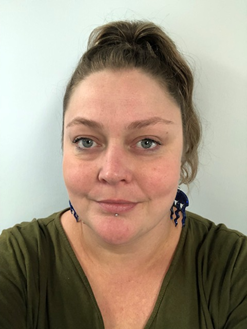 Project title: Taking a step towards intergenerational healing
Project title: Taking a step towards intergenerational healing
My research is a heuristic self-inquiry into culturally appropriate art therapy when working with Aboriginal and Torres Strait Islander young people aged 12 – 25 years within the context of North Queensland, Australia. Following clinical art therapy sessions at Headspace with identifying Aboriginal and Torres Strait Islander young people, I engaged in a practice called Dadirri, which is an ancient practice of Australia’s first nations people of deep and respectful listening to learn and reflect. I then captured these reflections and learnings within art making utilising clay due to its earthly qualities. The final step in the process is painting the clay sculpture to expand and highlight my reflections.
My research aims to explore what comprises culturally appropriate art therapy practice with Aboriginal and Torres Strait Islander young people and provide a small contribution to the knowledge field of art therapy hopefully taking us one small step closer toward intergenerational healing. As a non-indigenous clinician and qualified social worker, I believe that it is critical to reflect on our own practice to see what we can do to improve our cultural fitness and cultural safety when working with Aboriginal and Torres Strait Islander people.
I’ve always used art as a self-care and reflection tool. My art style changes with my mood along with the mediums utilised however I consistently use bright colours as they get my dopamine going. This is my first exhibition showcasing my work along this research journey. All of my artwork within this exhibition holds a connection to nature due to the subject of my research topic but also comprises an element of the ocean to represent me in the process.
The piece for the cover is titled “Messy Jellyfish” as it conveys my approach and response to research which has not come naturally to me. It is a fluid and organic piece utilising acrylic pour paint as the primary medium. This research process has stung me in some places as I have experienced self-doubt. However, like the process of engaging in this painting, it has come together to form a transparent piece of research.
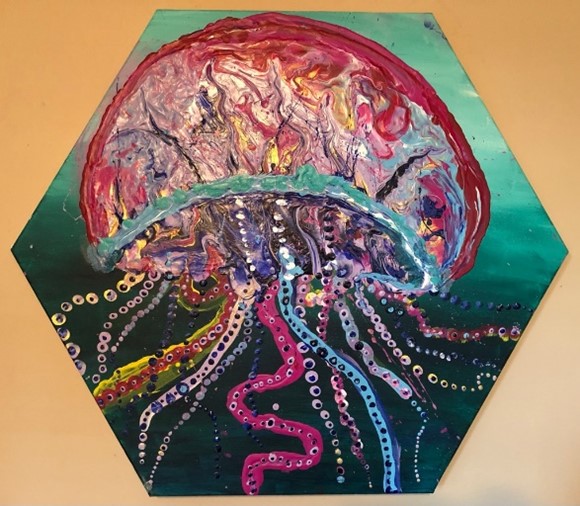
This art reflects my messy approach to research which has not come naturally to me. This research process has stung me within moments of self-doubt. However, I blobbed along.
Acrylic pour paint
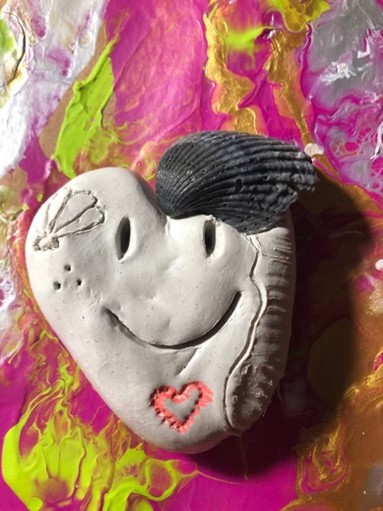
This question inspired my research. It was asked by an Aboriginal and South Sea Islander young person at the end of the session which focussed on psychoeducation using my brain model with googly eyes on the cortex.
Clay, acrylic paint, and a borrowed seashell from North Queensland
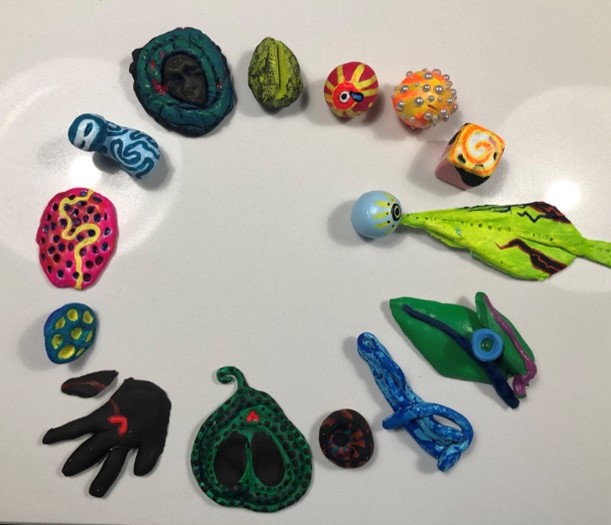
Created within the data collection period as response art from reflections obtained through Dadirri after an art therapy session with an Aboriginal and/or Torres Strait Islander young person.
Clay and acrylic paint.
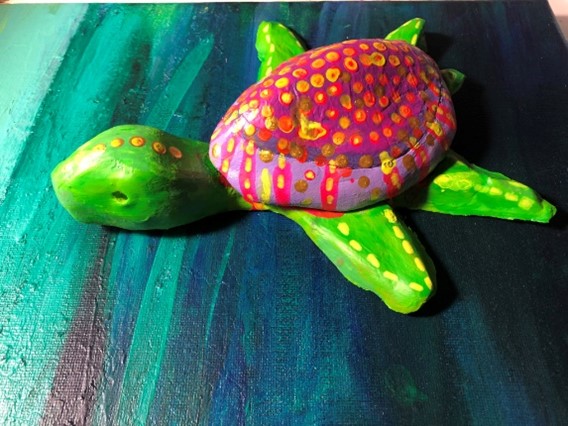
Slow on land, fast in water.
Clay and acrylic paint
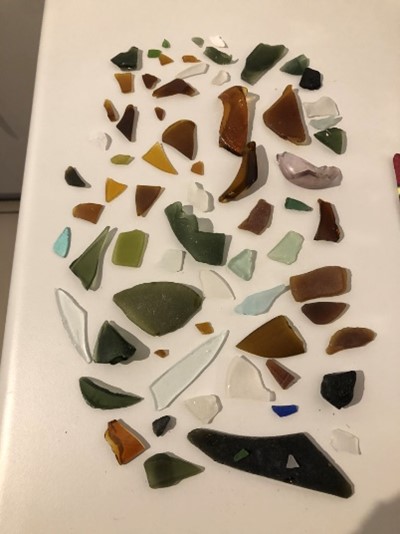
Some of the glass collected that will be assembled in Brisbane – Not able to do prior due to transport.
This is all the sea glass that I have collected whilst walking on Picnic Bay beach and rocks over the research writing trips on Yunbenun. It started by me noticing something shiny in the sand. My kind of mindfulness.
Found sea glass, superglue and board.
Six stages of the heuristic journey
6 jpegs.
Photographs of mini sculptures created to initially support understanding of the six unique heuristic steps. I’m represented in the clown fish’s journey.
Photography of a yowie toy, clay and variety of mixed materials. All natural materials that were returned to Wulgurukaba country.

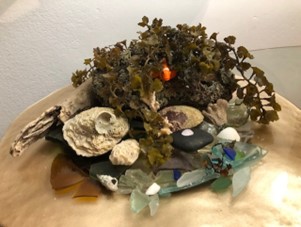
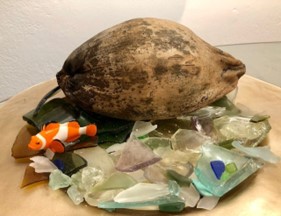
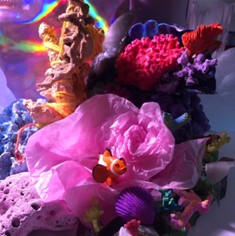
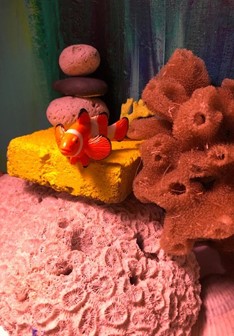
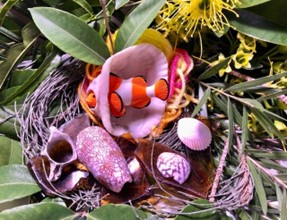
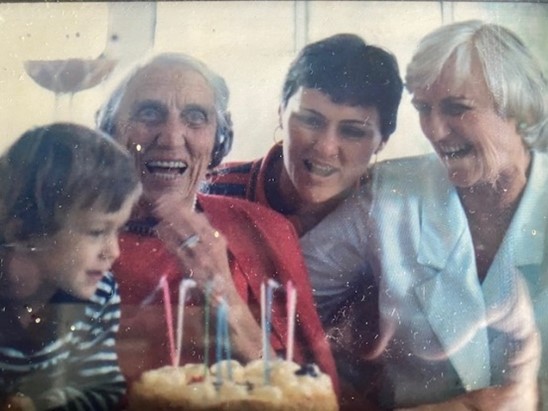
My grandmother’s story from when she was seven years old in 1933.
Photographs and mixed media on canvas.
